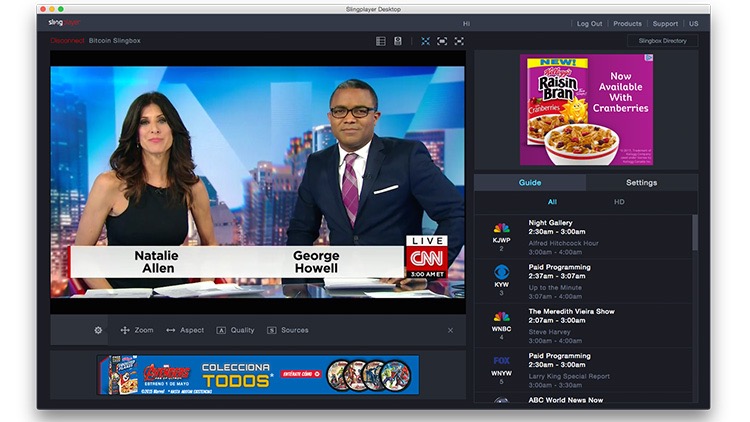End of An Era for Sling?

The Slingbox, the pioneering video place-shifting device that bolted onto the scene years before TV everywhere entered the industry’s lexicon, appears to have written its final chapter.
Sling Media has stopped manufacturing Slingbox devices but will continue to sell its remaining inventory, Satellite Business News reported earlier this month. Bottom line: consumers interested in picking up a Slingbox will need to buy one before the existing stock dries up, or to seek one out from the various online outlets that still sell them.
Sling Media didn’t deny that it has put a stopper in Slingbox manufacturing, noting that it continues to sell and support the products.
“We continue to sell Slingbox units and support our active community of Slingbox users. There are not any formal announcements to share at this time,” Mark N. Vena, vice president of worldwide marketing at Sling Media, said in a statement to Next TV.
Sling Media (which EchoStar, now the technology and set-top subsidiary of Dish Network, acquired in 2007 for $380 million) is selling its current flagship Slingbox model, the M2, for $99.99, a $100 discount from the price when the model was launched in 2015. Amazon and Best Buy also sell the M2 online for $99.99.
TECH WILL SURVIVE
Though standalone Slingboxes will become a rarer item in the years to come, its underlying technology is expected to live on. Dish Network, Sling Media’s corporate cousin, still integrates Sling’s technology into satellite DVR recorders, including its new 4K-capable Hopper 3 whole-home DVR.
The smarter way to stay on top of broadcasting and cable industry. Sign up below
The iconic Slingbox, introduced in 2005, paved the way for multiscreen access to pay TV services but has been unable to crack the consumer mainstream. Sling Media aimed for the mainstream with the 2015 launch of the M2, which removed the need for users to buy its supporting mobile apps for tablets and smartphones, supplementing the lost revenue with the controversial use of in-app advertising.
Sling Media has not disclosed Slingbox sales figures, but Satellite Business News estimated that about 2 million Slingbox units have been sold. A source familiar with the company said the sales figure is believed to be much higher, but said a small subset of that base actually uses the devices on a regular basis.
Slingbox remains a solution that provides access to one’s full pay TV subscription, including access to all live TV channels, as well as VOD and DVR recordings. But the increase in adoption of and support for for authenticated TV Everywhere apps, as well as new virtual MVPDs such as Sling TV, PlayStation Vue and DirecTV Now and OTT subscription services such as Major League Baseball’s At Bat have obviated the need for a discrete place-shifting device.
Word of Sling Media’s decision comes about 12 years after the company, then a small startup, made a splashy entrance at the 2005 CES in Las Vegas. It followed up later that year with the debut of its original model, a trapezoid-shaped, silver-colored device that retailed for $249.
The Slingbox originated from the vision of company co-founders and brothers Blake and Jason Krikorian, and was inspired by their desire to watch their beloved San Francisco Giants when they were on the road. Blake Krikorian died last August at the age of 48.
In a Facebook post last week, Jason Krikorian said he was “[o]nly slightly bummed that Slingbox production is being halted. In many ways I’m amazed that the product was still being produced 10 years after the acquisition.”
He added that he and his brother also realized then that the Slingbox would eventually be made irrelevant by streaming services, but stressed that “the Slingbox had a good run.”
Though EchoStar hasn’t confirmed its future plans for the Slingbox, it has shown a recent willingness to cut down retail products that don’t fit into its long-term business aims.
Last fall, for example, EchoStar shut down Sage by Hughes, a short-lived do-it-yourself home security and automation service, after the product had trouble gaining traction amid heated competition from other retail products and services from companies such as ADT, Comcast, Verizon Communications and AT&T.
